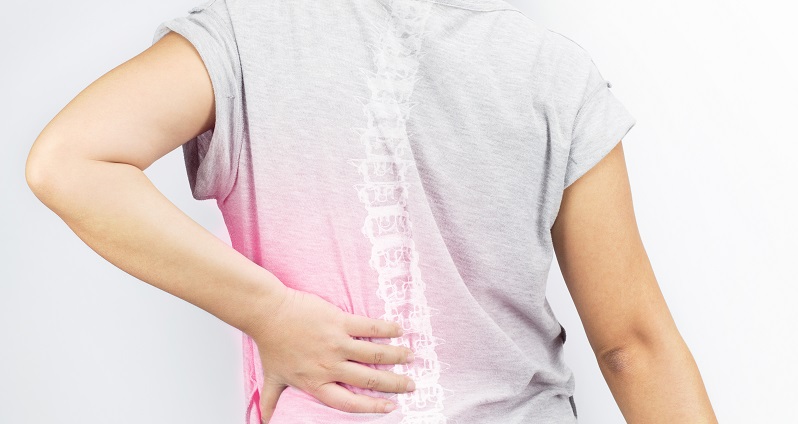Explaining Adult Degenerative Scoliosis
Category: Spine | Author: Stefano Sinicropi

As we’ve touched on previously on the blog, scoliosis is categorized by an abnormal curvature of the spine. Oftentimes it occurs in kids and teens whose bodies are still growing, but it can also occur in older patients. When it develops in a patient over the age of 18, it is classified as adult scoliosis, and when it develops at this age without a documented history of problems as a child, it is classified as adult degenerative scoliosis.
Causes and Symptoms of Adult Degenerative Scoliosis
Degenerative scoliosis is caused by the degeneration or breakdown of the facet joints and intervertebral discs in your spine. When this happens, it can result in what’s known as spinal asymmetry, where one side of the spine begins to take on the brunt of the stress. This leads to more structure breakdown and eventual spinal curvature. Other spinal conditions like compression fractures, osteoporosis and spinal stenosis can also contribute to adult degenerative scoliosis.
Symptoms of adult degenerative scoliosis can include:
- Visual curvature of the spine
- Spinal instability
- Trunk imbalance
- Irregular gait
- Progressive back pain
- Difficulty sitting
- Breathing problems
- Spine stiffness
Diagnosing and Treating Adult Degenerative Scoliosis
Diagnosing the condition begins with an exam by your spinal specialist. They will take a look at your medical history, ask about your symptoms and conduct a comprehensive physical exam looking for things like balance problems, visible deformities of the spine and muscle weakness. They may also have you perform a few simpler movements to see how your spine moves and if symptoms appear. From there, they will likely confirm their suspicious with the help of diagnostic imaging tests like an X-ray, MRI or CT scan.
If the condition is mild, most doctors will recommend non-surgical treatment options. The most common conservative treatment options include anti-inflammatory medications, spinal exercises or physical therapy, and soft or rigid braces. If conservative care options fail to address the issue, or you’re dealing with a more serious scoliosis condition, surgery may be recommended.
Minnesota Scoliosis Surgeon
Surgery to correct adult degenerative scoliosis has two purposes – correct the cause of the spinal column shift and stabilize the spine so it doesn’t become a problem in the future. Spinal instrumentation is often used in the form of screws, rods or bone grafts. A doctor may also choose to fuse two vertebrae together to prevent them from shifting. Most operations to address spinal scoliosis have a very high success rate.
So if you’re experiencing any of the above symptoms, or you’ve been diagnosed with mild degenerative scoliosis, reach out to Dr. Sinicropi to set up a consultation and talk about your options.